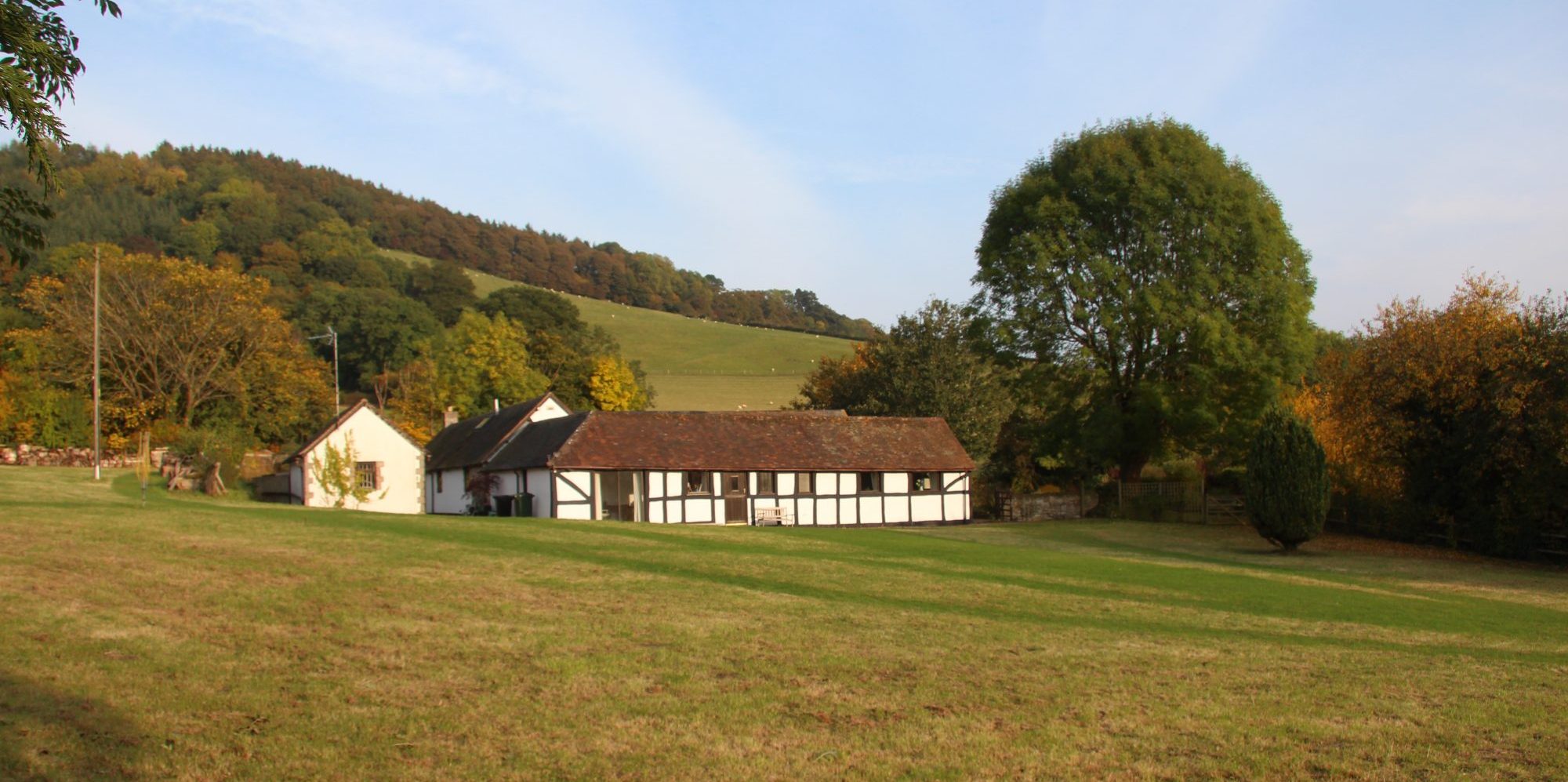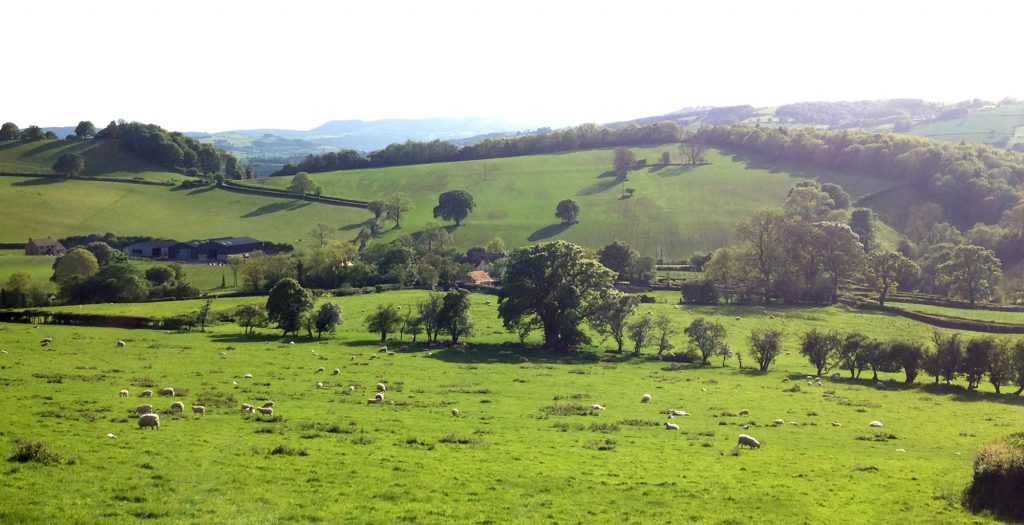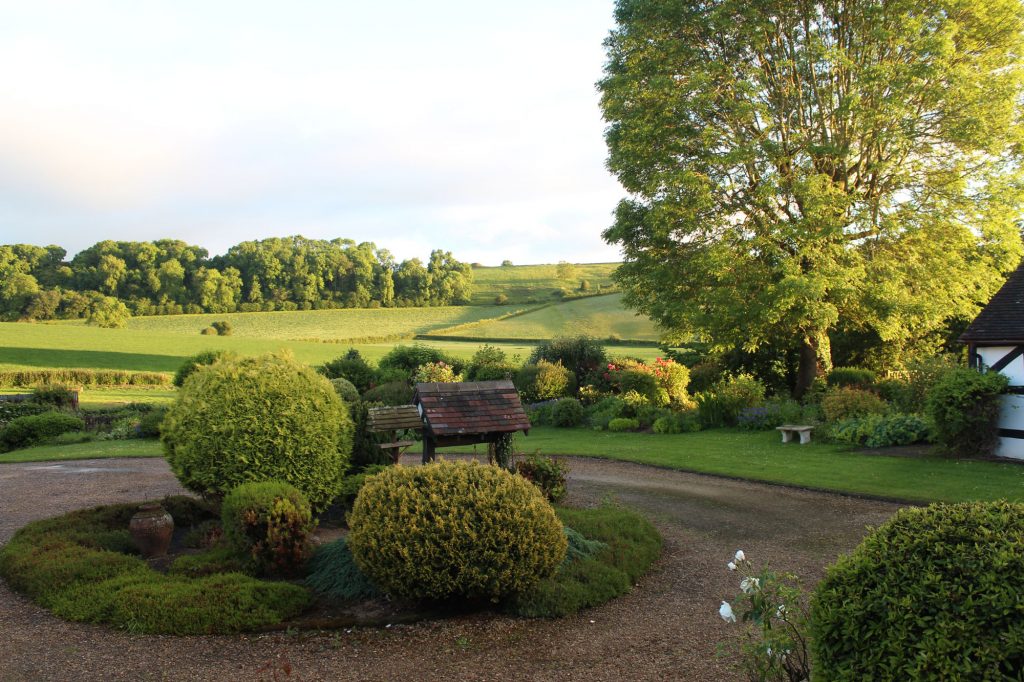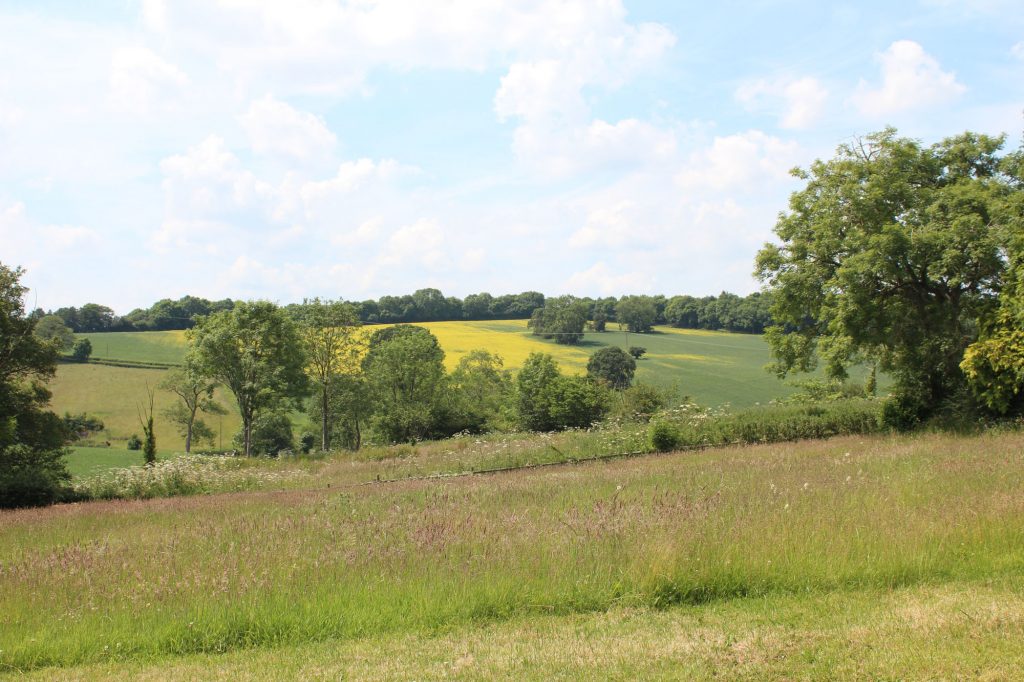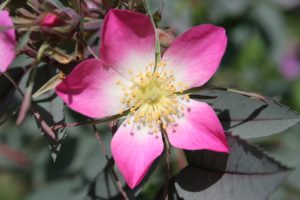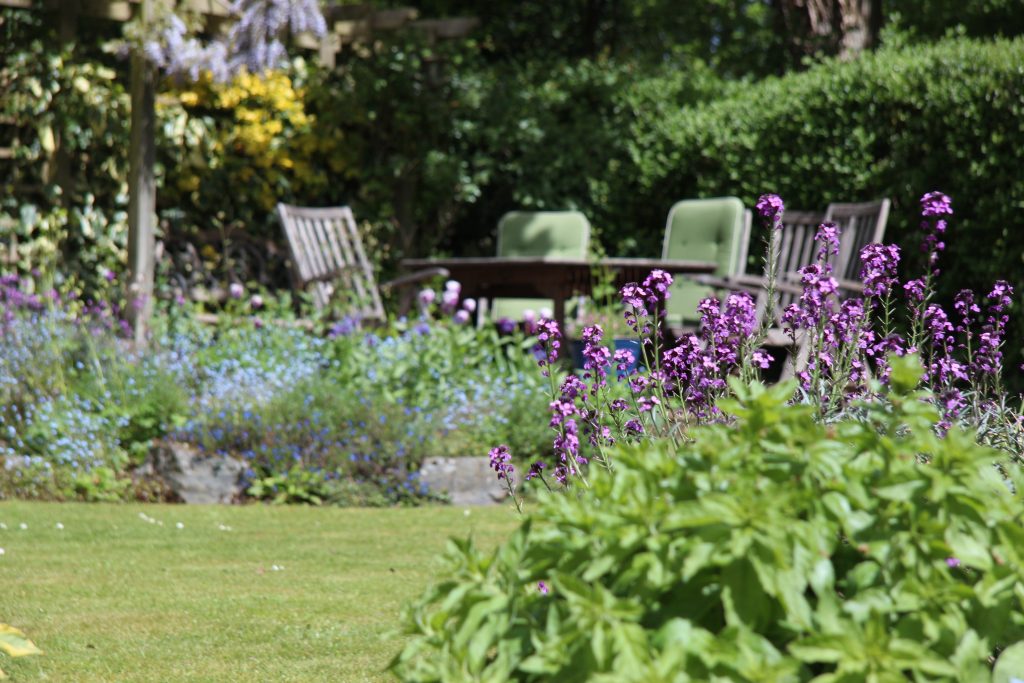Long before we moved we had plans for an orchard. Nothing too big, simply a few ordered rows of fruit trees; a romantic rural scene. We soon earmarked the top part of the L-shaped garden to be the productive area , gently sloping to the south‑east and sheltered on the other three sides
I came across the website of a Shropshire ‘orchardist’ who specialises in old varieties, particularly those from the Welsh border counties. So, in the autumn we visited his nursery high in the hills near Oswestry and he gave us a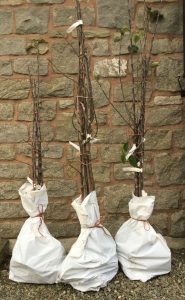 fascinating tour of his tree nursery explaining the fundamental principles of growing fruit trees.
fascinating tour of his tree nursery explaining the fundamental principles of growing fruit trees.
From his list of suitable one or two‑year‑old half‑standard trees we made a selection of sixteen: eleven apples, two pear, two plum and a cherry, all different varieties, including some from Shropshire.
He contacted us in December to say that the bare-rooted trees were ready; we arranged to meet him at a farm shop outside Ludlow – where he was renovating an old orchard – to collect our trees. He instructed us to prune them to belly‑button height once planted, apart from the stone fruit which must be pruned when in leaf to minimise risk of disease.
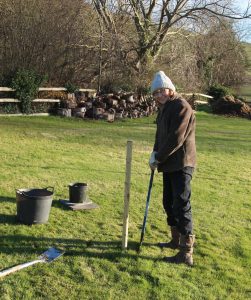 My husband – ever with attention to detail – accurately measured and placed the stakes to ensure the rows were evenly spaced.
My husband – ever with attention to detail – accurately measured and placed the stakes to ensure the rows were evenly spaced.
We planted each tree carefully, tied it securely to its stake and surrounded it with a rabbit guard.
Finally, I pruned the apples and pears to ‘belly-button’ height.
I arranged the apples, pears and plums in five rows of three, with the cherry off to one side where I plan to have soft fruit. A few weeks later I planted two sloe trees (blackthorn) at the top of the orchard. All very satisfying. Now we just have to wait – fingers crossed – for spring growth.

